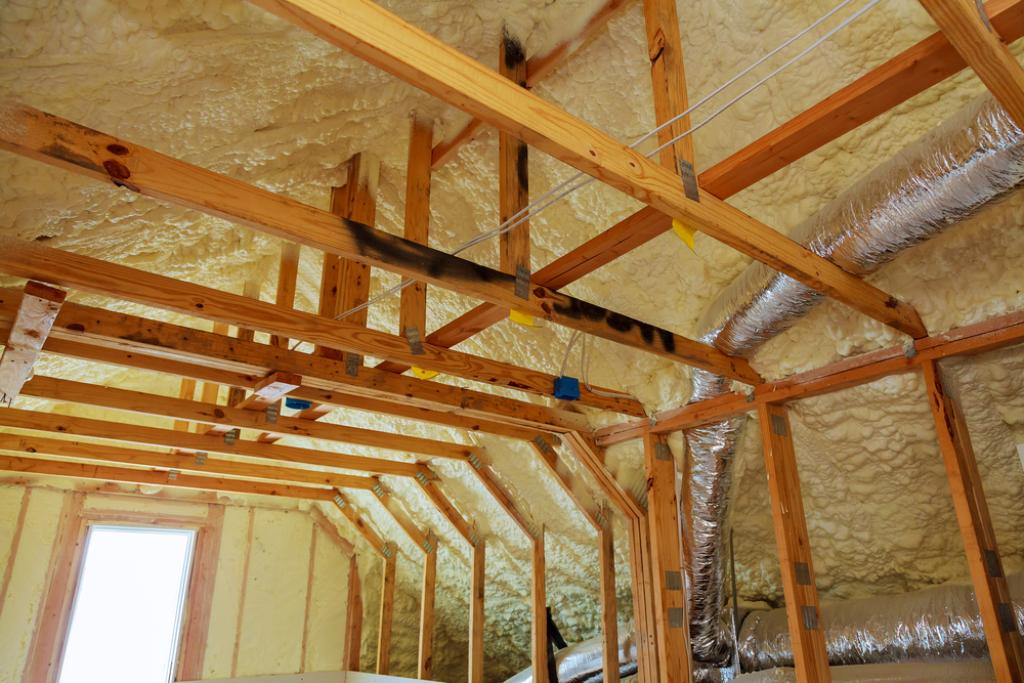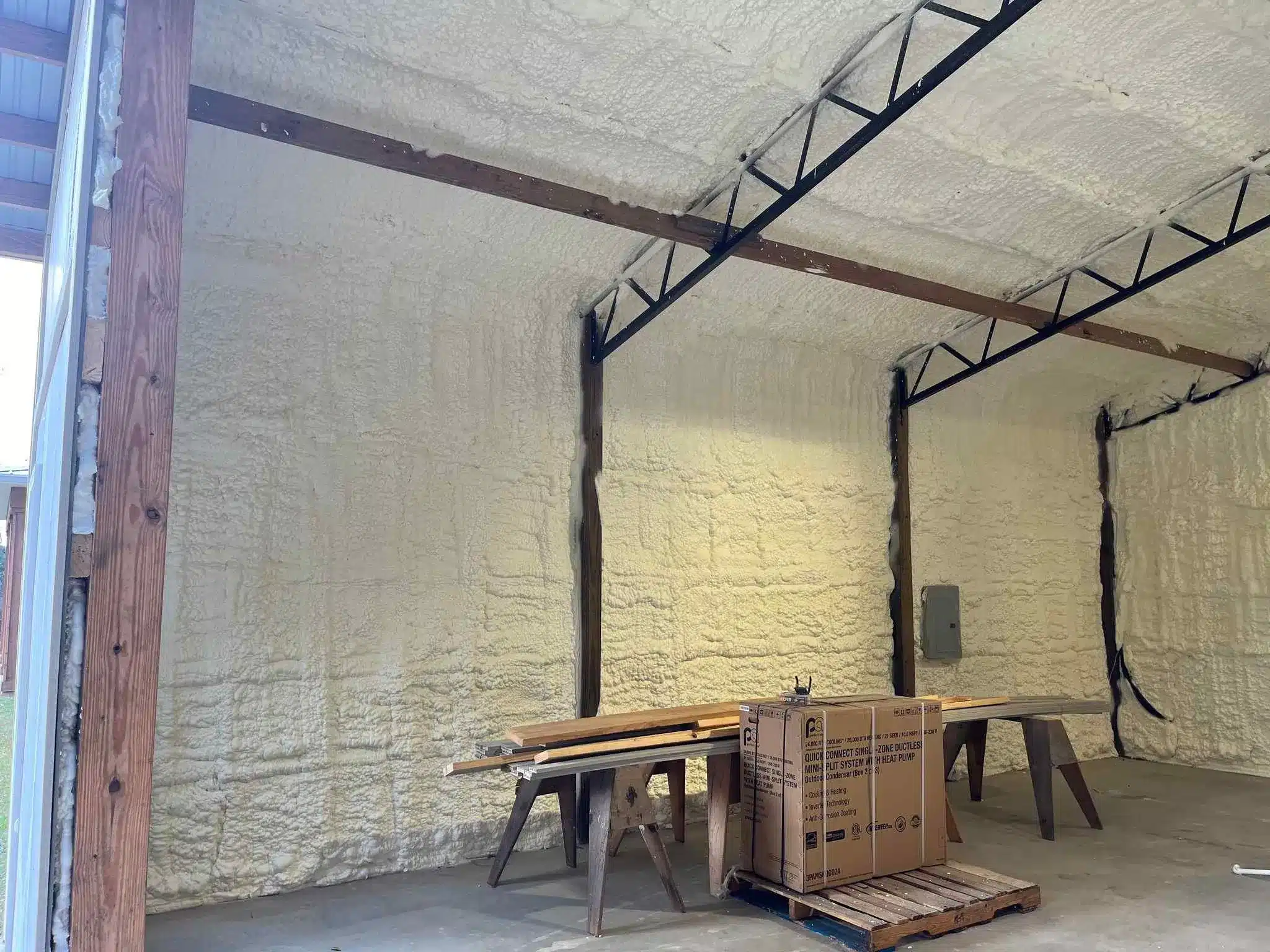Insulation Secrets That Can Make a Big Difference in Daily Living
While the financial savings from a well-insulated home are significant, the real improvements are to your daily life.

The biggest secret to improving your daily life with insulation has less to do with the fluffy material in your attic and more to do with stopping air leaks. While insulation slows the transfer of heat, a properly air-sealed home offers unexpected benefits. It becomes significantly quieter, the indoor air is cleaner, and comfort is consistent from room to room, which gets rid of the cold spots and drafty corners found in so many houses. While saving money on energy bills is a great perk, this article will uncover the practical, day-to-day advantages of a professional insulation solution that go far beyond your heating costs.
Secret 1: It's One of the Best Forms of Soundproofing
One of the most immediate and surprising benefits of a thorough insulation upgrade is the peace and quiet. The right type of insulation is an incredibly effective sound dampener, absorbing airborne noise and creating a more tranquil living environment.
Materials with a soft or dense structure, like open-cell spray foam or dense-packed cellulose, are particularly good at this. They reduce noise from the outside, such as traffic, lawnmowers, or neighbors. They also minimize sound transmission within the house. Insulating the walls around a laundry room, bathroom, or home theater can keep the noise from those activities from disturbing the rest of the household.
Bonus Tip: When finishing a basement or creating a home office, insulating the ceiling joists before putting up the drywall can make a huge difference in blocking the sound of footsteps and conversations from the floor above.
Secret 2: It Makes Your Summers More Comfortable
In a place with four distinct seasons, many homeowners focus on insulation for winter warmth. The often-overlooked secret is that a well-insulated and air-sealed home is just as important for staying comfortable during hot and humid summers. Insulation works both ways; it keeps heat out just as well as it keeps it in.
The attic is a perfect example. On a sunny day, an uninsulated or poorly insulated attic can reach temperatures of 150°F or higher. This intense heat radiates down through the ceiling, making the second floor of the home feel stuffy and warm, even with the air conditioning running. By properly insulating and air-sealing the attic, you create a thermal barrier that stops this heat transfer, keeping the upstairs cool and comfortable and drastically reducing the workload on your AC system.

Secret 3: It Can Improve Your Family's Health
There's a common misconception that a house needs to "breathe" through leaks and drafts to have good air quality. In reality, the opposite is true. Those uncontrolled leaks are letting in unfiltered air from the outside, which can be full of dust, pollen, mold spores, and other pollutants.
A key benefit of insulation systems that also air seal, like spray foam, is that they stop this random air infiltration. By creating a tight building envelope, you get to control the air your family breathes. This can lead to a significant reduction in allergy symptoms and respiratory irritation. The secret is to pair an airtight home with a controlled mechanical ventilation system, such as a heat recovery ventilator (HRV), which brings in a steady supply of fresh, filtered air while exhausting stale air.
Secret 4: It’s a Key Tool for Moisture Control
Insulation’s role in managing moisture is a critical but often misunderstood benefit that protects the long-term health of your house. Moisture is the enemy of wood framing, and uncontrolled moisture can lead to rot, mold, and structural damage.
In cold climates, a major problem is the formation of ice dams on the roof. This happens when heat escapes from the living space into the attic, melts the snow on the roof, and the water then refreezes at the cold eaves. The resulting ice can back up under the shingles and cause serious water damage. A properly air-sealed and insulated attic keeps the roof deck cold, preventing the snow from melting in the first place.
In basements and crawl spaces, closed-cell spray foam is a powerful tool. Because it is impermeable to water, it acts as a vapor barrier, preventing dampness from the ground from getting into the building materials.
Choosing the Right Insulation for Your Goal
Different insulation materials excel at different things. This table can help you match a material to your primary goal.
| Primary Goal | Best Insulation Choice(s) | Why It Works Well |
|---|---|---|
| Soundproofing | Open-Cell Spray Foam, Dense-Packed Cellulose | Soft, porous, or dense materials are excellent at absorbing sound waves. |
| Maximum R-Value in a Tight Space | Closed-Cell Spray Foam | Offers the highest R-value per inch, making it ideal for 2x4 walls or shallow rafters. |
| Moisture & Mold Prevention | Closed-Cell Spray Foam | Acts as a vapor barrier, preventing moisture from passing through. |
| Air Sealing Existing Walls | Injection Foam, Dense-Packed Cellulose | Can be installed in enclosed cavities to fill gaps and reduce air leakage. |
Once you have an idea of the right material for your goal, it's important to approach the project systematically for the best results.
Things to Consider Before You Start a Project
To get the most out of an insulation upgrade, it helps to think of your house as a complete system, not just a collection of parts.
Get a Professional Energy Audit First
Instead of guessing where your home's problems are, a home energy audit can give you a clear roadmap. An auditor will use tools like a blower door test to measure air leakage and an infrared camera to see exactly where you're losing heat. This data-driven approach ensures you invest your money in the upgrades that will make the biggest difference.

The Importance of a Quality Installation
The performance of any insulation material is only as good as its installation. Gaps, voids, and compression can all dramatically reduce the effectiveness of the product. This is why hiring a reputable, experienced contractor is so important.
Bonus Tip: When getting quotes, ask contractors if their price includes air sealing work in the attic before they add the insulation. A good contractor will always seal the small gaps around pipes, wires, and light fixtures first.
Questions People Often Ask About Insulation
Why are the rooms over my garage always so cold?
This is a very common problem. The garage is an unheated space, and often the floor separating it from the room above is poorly insulated and not air-sealed. Insulating the garage ceiling with a high-performance product like spray foam can completely solve this issue.
Can adding insulation make my house too tight?
It can make it airtight, which is a good thing. A tight house is an efficient and healthy house, as long as you have a plan for fresh air. This is achieved with a controlled mechanical ventilation system, such as a heat recovery ventilator (HRV), which provides a steady supply of fresh, filtered air.
What is the most overlooked spot to insulate in a home?
The rim joist. This is the wooden perimeter that sits on top of your foundation in the basement or crawl space. It's a huge source of air leakage, and sealing and insulating it is a relatively low-cost upgrade that provides an immediate improvement in comfort.
Does a higher R-value always mean better performance?
Not necessarily. A perfectly installed R-19 batt in a wall will perform much better than a poorly installed R-21 batt that has gaps and is compressed. The quality of the installation is just as important as the R-value of the material.
Will new insulation get rid of condensation on my windows?
It can help, but it won't solve it completely. Condensation on windows is usually a sign of high indoor humidity and an inefficient window. Improving your home's ventilation will have a bigger impact on window condensation.
A Lasting Investment in Your Home's Comfort
While the financial savings from a well-insulated home are significant, the real improvements are to your daily life. A quieter, healthier, and more comfortable home is an investment that pays dividends every day. Since every house has unique challenges, the best way to create a smart strategy is with a professional assessment. An experienced contractor can identify problem areas and recommend the most cost-effective solutions. For a detailed consultation, homeowners can reach out to a company like Lamothe Spray Foam Insulation at (508) 847-0119 or by email at LamotheInsulation@gmail.com.
- Author: With over two decades of hands-on experience, Robert Lamothe, owner and lead installer of Lamothe Insulation, brings expertise in spray foam insulation, carpentry, and building science.
- Reviewer: Ethan Taylor has 8 years of experience in spray foam insulation. He reviewed this content and suggested ways to simplify business outreach while keeping trust and professionalism intact.